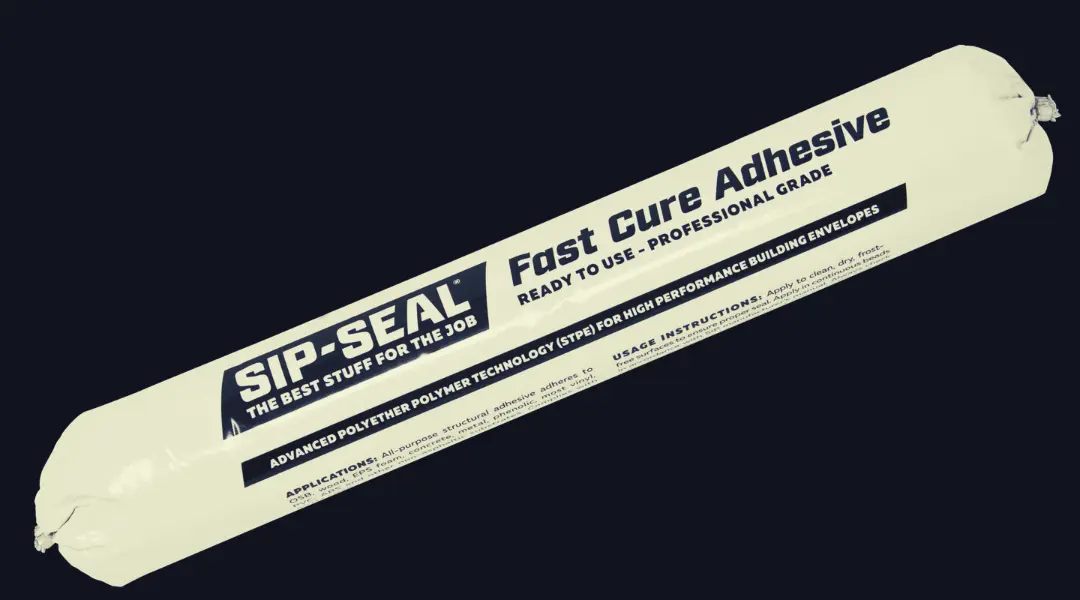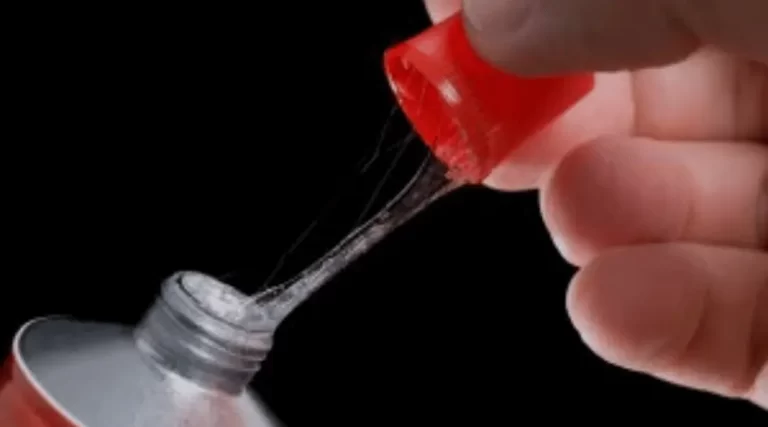Fast-cure adhesive is a type of adhesive that is designed to cure or harden quickly after it is applied. This type of adhesive can be used in a wide range of applications, from automotive repair to construction. While fast-cure adhesive can be incredibly useful, it is important to understand its uses, pros, and cons before using it in any project.
In this article, we will explore what fast-cure adhesive is, its uses, and its pros and cons. We will also discuss safety measures and best practices to follow when using fast-cure adhesive.
By the end of this article, you will have a better understanding of what fast-cure adhesive can be used for and whether it is the right choice for your project.
Definition of Fast-cure Adhesive

The current section provides an objective and impersonal definition of an adhesive with accelerated curing properties. Fast-cure adhesive, as the name suggests, is an adhesive that cures or hardens at a much faster rate than traditional adhesives. It is a type of adhesive that has been formulated to accelerate the curing process through chemical reactions or other means.
Adhesives with fast-cure properties offer numerous advantages over traditional adhesives, such as reduced curing time, faster throughput, and increased productivity. Fast-cure adhesive also has the ability to bond a wide range of materials, including metals, plastics, composites, and ceramics.
The applications of fast-cure adhesive are diverse and span across different industries. It can be used in the automotive industry to bond various components such as mirrors, trims, and door handles. In the aerospace industry, fast-cure adhesive is used to bond composite materials in the manufacturing of aircraft parts. In the construction industry, it is used for bonding and sealing purposes. The medical industry also uses fast-cure adhesive in the production of medical devices and equipment.
The uses of fast-cure adhesive are endless, and its popularity continues to grow due to the numerous benefits it offers. The subsequent section will delve into the various uses of fast-cure adhesive in more detail.
Uses of Fast-cure Adhesive
One practical application of fast-cure adhesive is its ability to bond different materials quickly and efficiently, saving time and increasing productivity in various industries. Common applications of fast-cure adhesive include automotive, electronics, aerospace, and construction industries.
In the automotive industry, fast-cure adhesives are used to bond different materials such as plastic, metal, and rubber, replacing traditional welding and mechanical fasteners. In the electronics industry, fast-cure adhesive is used to bond fragile components and increase the durability of electronic devices. Aerospace and construction industries use fast-cure adhesive to bond metal and composite materials, providing a strong bond that can withstand extreme temperature and pressure.
Benefits of fast-cure adhesive include increased productivity, reduced labor costs, and improved safety. Fast-cure adhesive allows for quick and efficient bonding, reducing the time and labor required for traditional bonding methods such as welding and mechanical fasteners. This type of adhesive also eliminates the need for harmful chemicals and fumes associated with traditional bonding methods, making it safer for workers.
Compatibility considerations and limitations of fast-cure adhesive include its inability to bond certain materials, such as polyethylene and polypropylene, and its limited strength compared to traditional bonding methods. However, with advancements in technology, fast-cure adhesive is becoming more versatile and stronger, making it a viable option for various bonding applications.
Transitioning into the subsequent section about the pros of fast-cure adhesive, it is important to note that despite its limitations, fast-cure adhesive provides numerous benefits that make it a valuable tool in various industries.
Pros of Fast-cure Adhesive
Fast-cure adhesive offers a multitude of benefits that make it a popular option in many industries.
Firstly, its quick curing time means that production processes can be sped up, resulting in increased efficiency and productivity.
Secondly, its strong bonding properties ensure that materials are securely joined, reducing the risk of failure or damage.
Lastly, its versatility allows it to be used on a wide range of materials, making it a go-to option for various applications.
These advantages make fast-cure adhesive a reliable choice for those looking for an effective bonding solution.
Quick Curing Time
The rate at which the fast-cure adhesive sets enables the user to accomplish their task swiftly, as the adhesive dries quickly and efficiently like a ticking clock. The quick curing time is a significant benefit of fast-cure adhesive, making it the go-to choice for manufacturers and construction workers who work under tight deadlines. Fast-cure adhesive ensures that the project is completed within the stipulated time, reducing downtime and increasing productivity.
Additionally, the adhesive’s fast-drying feature improves the overall quality of the work, ensuring that the finished product is of high quality and meets all required standards. The quick curing time of fast-cure adhesive has made it an essential tool in various applications such as automotive, electronics, and construction. The adhesive’s quick-drying feature is particularly useful in industries that require precision and accuracy, such as in electronics and aerospace.
Furthermore, fast-cure adhesive reduces the time required for manufacturing assemblies, which in turn, reduces the cost of production. However, while the quick curing time of fast-cure adhesive has numerous benefits, it also has its drawbacks, such as the need for careful handling during application due to its fast-drying properties. Nonetheless, the adhesive’s strong bonding properties make it a popular choice for various applications, making it a versatile adhesive in many industries.
Strong Bonding Properties
The strength of the bond created by the fast-curing adhesive makes it a highly desirable tool for various industries and applications. Strong bonding properties are crucial for any adhesive, and fast-cure adhesives excel in this aspect. These adhesives can form bonds that are resistant to shear, tensile, and compressive forces. They can also form bonds between dissimilar materials, which is often difficult to achieve with traditional adhesives.
Adhesion strength is an important property of fast-curing adhesives that ensures the durability and reliability of the bond. The strength of the bond depends on various factors such as the type of adhesive, the surface preparation, and curing conditions. Fast-cure adhesives offer high adhesion strength, which means that they can form robust bonds with substrates in a short amount of time. This feature makes them ideal for applications that require quick assembly or repair, where the strength of the bond is critical.
Fast-curing adhesives are not only known for their strong bonding properties, but also their versatility in various industries and applications.
Versatility
The versatility of fast-curing adhesives across multiple industries and applications underscores their value and potential for addressing diverse bonding needs. Fast-curing adhesives can be used in a variety of applications, including automotive, aerospace, electronics, medical devices, and construction. They can be used to bond dissimilar materials, such as plastics, metals, and composites, and can withstand harsh environmental conditions, such as high temperatures, humidity, and UV exposure.
The benefits of fast-curing adhesives are numerous. They offer a quick and efficient way to bond materials, reducing assembly time and costs. They also provide a strong and durable bond that can improve the performance and reliability of the final product. Additionally, fast-curing adhesives can eliminate the need for traditional mechanical fasteners, which can weaken the structure and add weight.
Despite these benefits, there are some cons to using fast-curing adhesives.
Cons of Fast-cure Adhesive
One potential drawback of rapid-setting adhesives is that their accelerated curing process can create a brittle bond, akin to a hastily arranged marriage that lacks the strong foundation of a longer courtship. This can cause the bond to break under stress or in extreme temperatures.
Additionally, fast-cure adhesives may contain hazardous chemicals that can pose a risk to human health and the environment if not handled properly. These potential hazards emphasize the importance of using safety measures and best practices when working with these adhesives.
Despite these drawbacks, fast-cure adhesives remain a popular choice in many industries due to their time-saving benefits and versatility. However, it is essential to weigh the pros and cons carefully and take necessary precautions when working with these adhesives to ensure both personal safety and the integrity of the bond.
In the next section, we will discuss some safety measures and best practices to keep in mind when using fast-cure adhesives.
Safety Measures and Best Practices
Fast-cure adhesives are widely used in various industrial applications due to their quick bonding properties. However, their fast-curing nature also poses potential hazards to both human health and the environment.
To minimize these risks, it is crucial to follow proper handling and storage procedures, as well as application techniques.
This discussion will explore the best practices and precautions that should be taken when using fast-cure adhesive to ensure safety and effectiveness.
Handling and Storage
Proper handling and storage techniques are critical for ensuring the effectiveness and longevity of fast-cure adhesive.
Storage tips to keep in mind include storing the adhesive in a cool, dry place, away from direct sunlight and heat sources. It is best to store it in its original container with the lid tightly closed to prevent contamination and moisture from seeping in.
It is also important to check the shelf life of the adhesive before use, as expired products can lead to failure or malfunction. In addition, it is recommended to keep the adhesive out of reach of children and to wear appropriate protective gear, such as gloves and safety glasses, when handling it.
By following these handling and storage techniques, users can ensure that the adhesive remains in optimum condition and performs as intended.
Proper application techniques are also important for achieving the desired results. To ensure a successful bond, it is critical to follow the manufacturer’s instructions and use the appropriate amount of adhesive. In the next section, we will discuss the proper application techniques in detail.
Proper Application Techniques
The successful application of fast-cure adhesive greatly depends on the implementation of precise and meticulous techniques. When applying the adhesive, it is essential to prepare the surfaces that are to be bonded thoroughly. Surfaces should be clean, dry, and free of oil, grease, dust, and debris. This can be achieved by using solvents or abrasive materials such as sandpaper or wire brushes.
Additionally, it is crucial to apply the adhesive in a thin and even layer using the appropriate tool, such as a brush or nozzle. This ensures that the adhesive is spread evenly across the surface, reducing the likelihood of air pockets and weak spots. It is also important to apply the adhesive at the correct temperature and pressure, as lower temperatures can slow down the curing process, while higher temperatures can accelerate it.
By following these tips and techniques, the bonding process can be optimized, ensuring maximum efficiency and durability of the bond.
Moving forward, it is important to note that while precise application techniques are essential, precautions must also be taken to ensure the safety of users when handling fast-cure adhesive.
Precautions to Take When Using Fast-cure Adhesive
When using fast-cure adhesive, it is crucial to take necessary precautions to ensure the safety of individuals handling the product. Safety gear such as gloves, goggles, and masks should be worn to prevent skin or eye contact and inhalation of fumes. Additionally, handling techniques should be observed, such as keeping the product away from heat sources and open flames, avoiding spills, and not mixing different types of adhesives.
To ensure a safe work environment when using fast-cure adhesive, here are some precautions that should be taken:
- Store the adhesive in a cool, dry place to prevent it from reacting with moisture.
- Always read and follow the manufacturer’s instructions before using the product.
- When disposing of the product, follow proper waste disposal regulations to prevent environmental hazards.
- Be aware of the potential hazards of the product, such as flammability and toxicity, and take necessary precautions to prevent accidents.
By observing safety gear and handling techniques, individuals can ensure that they are using fast-cure adhesive in a safe and responsible manner. It is important to remember that the product’s potential hazards should always be taken seriously, and individuals should always prioritize safety over convenience.
Conclusion
Fast-cure adhesive, also known as instant adhesive or super glue, is a type of adhesive that bonds materials quickly and efficiently. It is particularly popular in the manufacturing industry due to its ability to bond materials in seconds, thus reducing production time and costs.
The uses of fast-cure adhesive are numerous and diverse. It is commonly used in the automotive, electronics, aerospace, and medical industries, among others. Its ability to bond materials such as plastics, metals, and ceramics has made it a go-to adhesive for many applications.
Additionally, fast-cure adhesive is known for its high strength, durability, and resistance to extreme temperatures, making it suitable for use in harsh environments.
Despite its many advantages, fast-cure adhesive does have its drawbacks. Its quick bonding time can sometimes make it difficult to adjust or reposition materials during assembly. Furthermore, its strong bond can make it challenging to remove or repair parts once bonded, leading to potential damage to the materials being bonded.
Additionally, fast-cure adhesive can be toxic if ingested or inhaled, making it essential to follow safety measures and best practices when using it.
In conclusion, fast-cure adhesive is a powerful tool that has revolutionized the manufacturing industry. Its ability to bond materials quickly and efficiently has reduced production time and costs. However, it is essential to weigh its pros and cons and follow safety measures and best practices when using it. Fast-cure adhesive is a reminder of the power of innovation and the potential for technological advancements to change the world.




